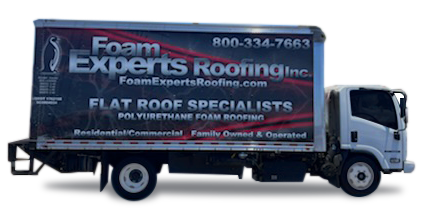What is Foam Roofing? Roofing foam is made from polyurethane, which is the first layer of the material. This material is sprayed onto an existing roof, where it expands to 20 times its size, forming a solid surface. The layer thickness can vary from one to two inches. After installation, the foam will stay in place and will not leak or damage the surrounding areas. A durable, weather-resistant membrane will follow.
Dura-Foam Roofing
The benefits of a Dura-Foam roof are numerous. These roofs are three inches thick and are excellent insulators, reducing heating and cooling costs by up to 60%. In addition to energy savings, they are highly durable and have an excellent fire rating, Class A. For this reason, they are an excellent choice for high-rise buildings. However, these roofs do have a few disadvantages.
Cost
The cost of foam roofing depends on a number of factors. It may be slightly more expensive than traditional roofing materials at first, but it will pay off in the long run. You won’t have to replace it in twenty years, and you can avoid the high initial cost by maintaining it with periodic re-coats. These coats to help keep the foam roofing from damage by the elements and birds. The price of foam roofing varies depending on the type of material and geographic location.
Installation
Using foam as roofing material has many advantages, including its long life and environmentally friendly properties. For one thing, it generates little waste, compared to traditional built-up roofing systems. The best part is that it can be installed on a variety of existing roofing systems without damaging beams or walls. Because foam roofing can be applied over an existing roof, it is the ideal option for older homes. In addition, foam roofing can protect your home for many years, only needing to be reapplied every 20 years or so.
Lifespan
In a study conducted by the National Institute of Standards and Technology in 2006, foam roofing systems suffered relatively little damage during Hurricanes Katrina and Rita. By comparison, three-tab shingles on BUR roofing systems sustained damage to at least 50 percent of their surface area. The typical lifespan of BUR is between 15 and 20 years, but with regular maintenance, foam roofing systems can last for a lifetime. While the average lifespan is about 15 years, many roofs made by Armstrong have lifetime warranties.
Environmental impact
Despite concerns about the environmental impact of foam roofing, the material is gaining popularity among property owners. Thanks to its inherent efficiency benefits and low environmental impact, this material is quickly becoming the roofing choice of many residential and commercial property owners. Its airtight capacity, high R-value, and high fire resistance make it a viable choice for many applications, including roofing. In addition, it meets or exceeds the energy codes for both residential and commercial properties.
If you are in the state of Arizona including Phoenix, Tucson, Mesa, and even as far as Lake Havasu Foam Experts Roofing can help you with a foam roof repair or replacement.















